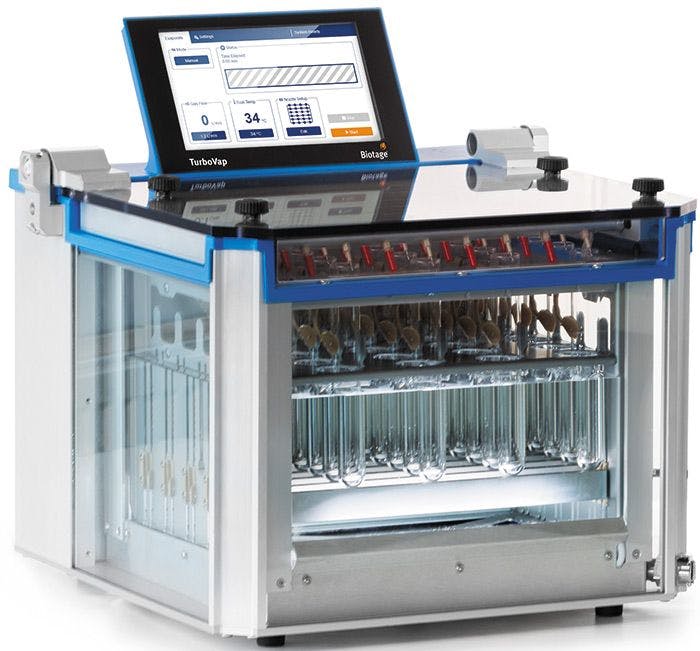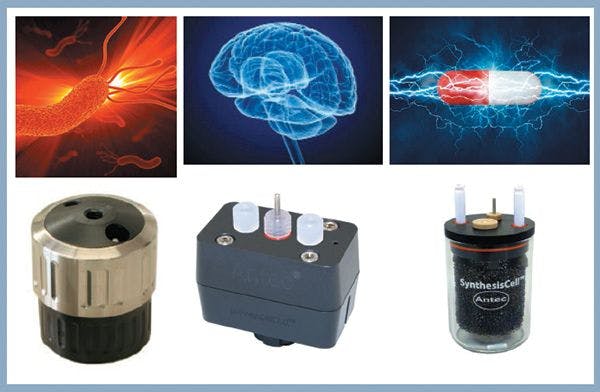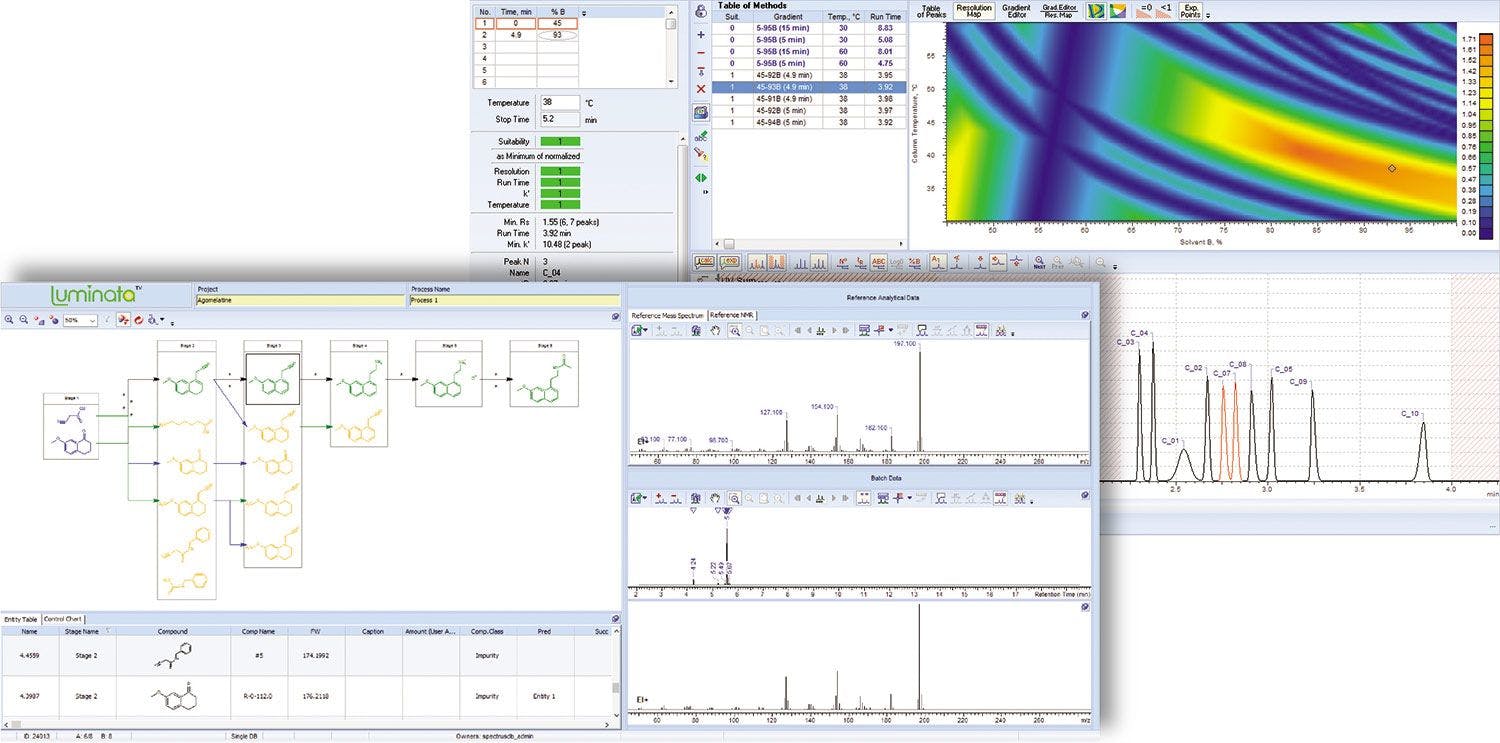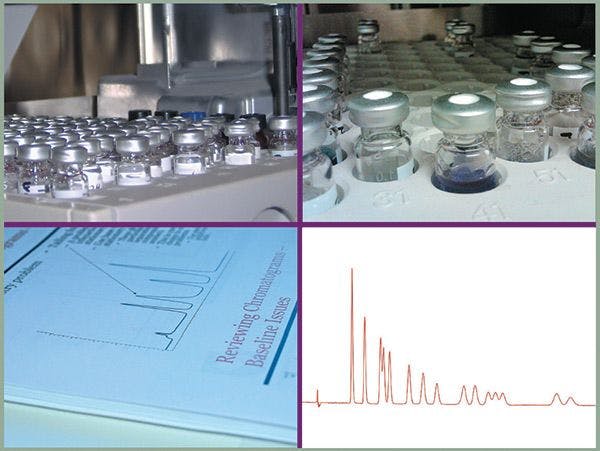Hamilton PRP-C18 High-Efficiency Separations at Any pH
Special Issues
The Hamilton PRP-C18 is a column designed to provide high-efficiency reversed phase separations over an extended column life in nearly any mobile phase or pH. The rigid stationary phase has excellent mechanical and thermal stability (> 100 °C), does not experience shrinkage or swelling and is completely inert to most conditions commonly encountered in reversed phase chromatography. In this study the pH stability of the PRP-C18 is evaluated. Even after prolonged exposure to concentrated (1 molar) NaOH and H2SO4 there was no measurable deterioration in performance.
Octadecyl silane (ODS) is the prevailing stationary phase in reversed-phase HPLC. Despite a well-celebrated, widespread use in chromatography, traditional ODS columns are not without limitations. Acidic conditions promote hydrolytic stripping of octadecyl functionalization, while alkaline conditions (pH > 7) attack the silica bed, both of which are principle sources for anomalous peak shape and shifting retention times that progressively worsen over the life of the column.
The PRP-C18 reversed phase column has similar mechanical stability (up to 5000 psi) and separation efficiency to that of traditional ODS, but without many of the chemical restrictions. The PRP-C18 stationary phase does not experience stripping or dissolution under the most extreme conditions. This allows for an expanded mobile phase repertoire for use in methods development or aggressive regeneration procedures.
Experimental Conditions
Column: PRP-C18, 4.1 × 50 mm, 5 µm
Instrumentation: Agilent 1100 quaternary pump with UV detector
Standards: acetone, phenol, benzyl alcohol, benzene, toluene, ethylbenzene, propylbenzene, napthalene, pentylbenzene, hexylbenzene
Mobile phase A: 0.2% Phosphoric acid
Mobile phase B: A + 95% ACN
Gradient: 5 to 100% B in 20 min
Flow rate: 2 mL/min
Temperature: Ambient
Injection volume: 2 µL
Detection: UV at 205 nm
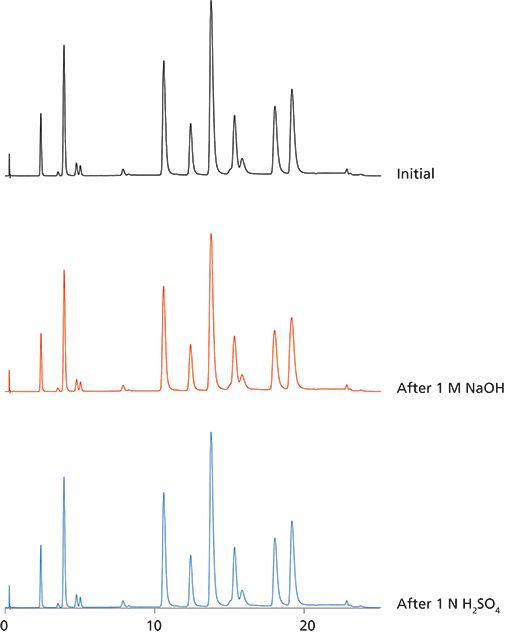
Figure 1: Separation of standard mix after 200 column volumes 1 M NaOH, 1 M H2SO4.
Conclusion
Mobile phase pH is a useful tool in methods development, particularly for separation of neutral forms of amines or other organic bases under alkaline conditions. Although a few more recent C18 columns boast stability in alkaline pH, column life is still considerably shorter than if used under more favorable conditions. On the other hand, the PRP-C18 has genuine pH and chemical stability. The stationary phase is devoid of free silanols, does not strip, bleed, or dissolve at any pH, and therefore can be expected to perform reliably and reproducibly throughout the extended life of the column, regardless of mobile phase conditions.

Hamilton Company
4970 Energy Way, Reno, NV 89502
tel. (800) 648-5950, fax (775) 858-3026
Website: www.hamiltoncompany.com

The Benefits of Custom Bonded Silica
April 1st 2025Not all chromatography resins are created equal. Off-the-shelf chromatography resins might not always meet the rigorous purification requirements of biopharmaceutical manufacturing. Custom bonded silica from Grace can address a wide range of separation challenges, leading to real performance improvements. Discover more about the latest innovations in chromatography silica from Grace, including VYDAC® and DAVISIL®.
5 Things to Consider When Selecting a Chromatography Silica
April 1st 2025Particularly in the pharmaceutical industry, drug purity isn’t just a goal – it’s essential for achieving safety, stability and efficacy. However, purification is easier said than done, especially with challenging molecules like DNA and RNA “oligonucleotides,” due in large part to their diversity and the range of impurities that can be generated during production. Enter DAVISIL® chromatographic silica, with a wide range of pore diameters and particle sizes to meet your specific application, performance and sustainability requirements. Before you choose the chromatography resin for your next purification application, take a look at these 5 considerations.
Automating Protein Purification: Efficiency, Yield, and Reproducibility
March 27th 2025Recent advancements in automated protein purification stress the importance of efficiency, scalability, and yield consistency. This eBook compares different purification platforms, highlighting their impact on downstream applications and demonstrating how automation enhances throughput and process control.
MilliporeSigma: Ultrapure Water for Sensitive LC-MS Analysis of Pesticides
March 25th 2025The aim of the study was to illustrate the efficiency of Milli-Q® water purification systems in eliminating pesticides from tap water, thereby producing and delivering reliable and consistent-quality ultrapure water suitable for pesticides analysis











